LOOK AT
THE SOUND
Thesis
by Ieva Valule2014
6.1 Term Stage Design
Stage Design or scenic design is a broad term that describes creation of scenery for variety of disciplines like theatre, opera, film etc. Usually trained professionals with a degree in the theatre arts are qualified to design stage sets. But it is more common that graphic designers, architects and other professionals from other artistic backgrounds are involved in this designing process.
The main goal of someone who is involved in stage design is to create the atmosphere, scenery or decorations that supports the content and the values of the event. In this chapter I will go in to the depth of outstanding examples of stage design that overlap the fields of subjectively inspirational design and sonology.
6.2 United Visual Artists
Our internal model of time, movement, mass and space is based on a lifetime of experience, perhaps even genetically encoded. What happens when we build a new model? What happens when we bend the rules?'
“United Visual Artists” is a multi-disciplinary collective from UK, which specializes in manipulating the medium of light. Not always their creations are addressed to the field of sound or music, but I find their installations a great inspiration and example of auditory experience. [30]
“United Visual Artists” is a multi-disciplinary collective from UK, which specializes in manipulating the medium of light. Not always their creations are addressed to the field of sound or music, but I find their installations a great inspiration and example of auditory experience. [30]
Mainly their concepts discover the tension between the synthesized and natural movements. Visually their work mainly consists of a dark and formless space that is defined through an array of light. This principle is surprisingly similar to the abstract film artists that used dark and indefinite background to focus on the viewer’s sight to the light. Actually flat graphical qualities of abstract 2d motion pictures come to life in United Visual Artist’s works. Especially this discovery inspires me to think of new ways to transform and develop the ideas of an abstract film in an installation (figure 31 and 32).
[30] United visual Artists - http://www.giorgiapolis.com/doc/united-visual-artists---momentum/
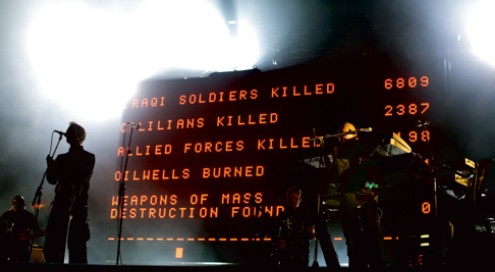
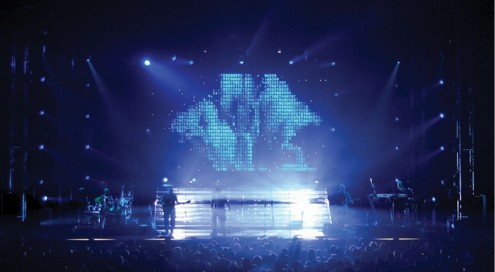
Figure 31. United Visual Artists - Massive Attack 100th Window World Tours, 2003.
These visuals were the group’s most explicitly political concept. Visuals were perfect synchronization between the music and the visuals was made possible by UVA’s custom d3 software.
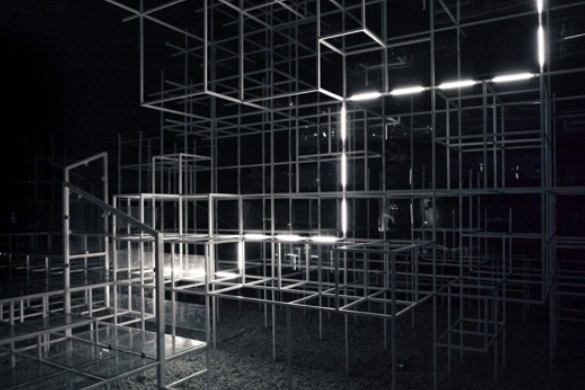
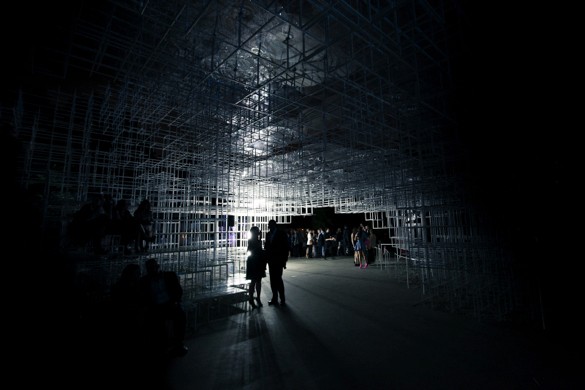
Figure 32. United Visual Artists - Serpentine Pavilion Intervention, London 2013.
An example of using indefinite dark space or unknown dimensions that is revealed by using light strokes.
6.3 Poème électronique
Poème électronique (Electronic Poem in English) is an 8-minute piece of electronic music by Edgard Varèse (1883-1965). This example shows pretty backward ways of the stage design, if we can call it at all like that. This particular music piece was specially composed for the Philips Pavilion at the 1958 Brussels World’s Fair. It was the first World’s Fair to be held after the destruction of World War II, and the idea was to celebrate the glorious development of civilization after dramatic destruction of the war. So they came up with the concept of not displaying commercial goods at all, but rather organizing an international team that consisted of an architect, an artist and a composer to create a pavilion displaying electronic technology of arts, culture, and the overall improvement of humankind.
The Philips Corporation instructed Le Corbusier (1887-1965) to create a pavilion, which was intended to advertise and expose their artistic engineering development. Also Iannis Xénakis (1922-2001) was an important player of Le Corbusier’s architectural team. “Poème électronique” architectural style inspiration comes from Le Corbusier’s idea about “the poem in the bottle”. Varèse created this musical piece with the intention to create liberation between a sound and space. As a result he uses noises that are not usually considered to be really musical or harmonic.
The Philips Corporation instructed Le Corbusier (1887-1965) to create a pavilion, which was intended to advertise and expose their artistic engineering development. Also Iannis Xénakis (1922-2001) was an important player of Le Corbusier’s architectural team. “Poème électronique” architectural style inspiration comes from Le Corbusier’s idea about “the poem in the bottle”. Varèse created this musical piece with the intention to create liberation between a sound and space. As a result he uses noises that are not usually considered to be really musical or harmonic.
“Poème électronique” was the first project to introduce simultaneous experience of the architecture, film, light and music in one total experience. Le Corbusier was not only responsible for the architectural construction but was also actively involved in dynamic light and image projections. The whole setting seems to be based on Varèse's ideas of the abstract sound concepts that create real forms and spatial movements of sound.
The biggest advantage of the extraordinary shape of construction was the acoustics that allowed the sound to wander throughout the space on highly complex routes. The main mission of the artwork was to show the modern human dependency on the electricity instead of daylight and natural light sources.
[31]
Jean Petit (ed.): “
Le Poème Electronique Le Corbusier”
. Edité par Eindhoven, Philips, 1958.
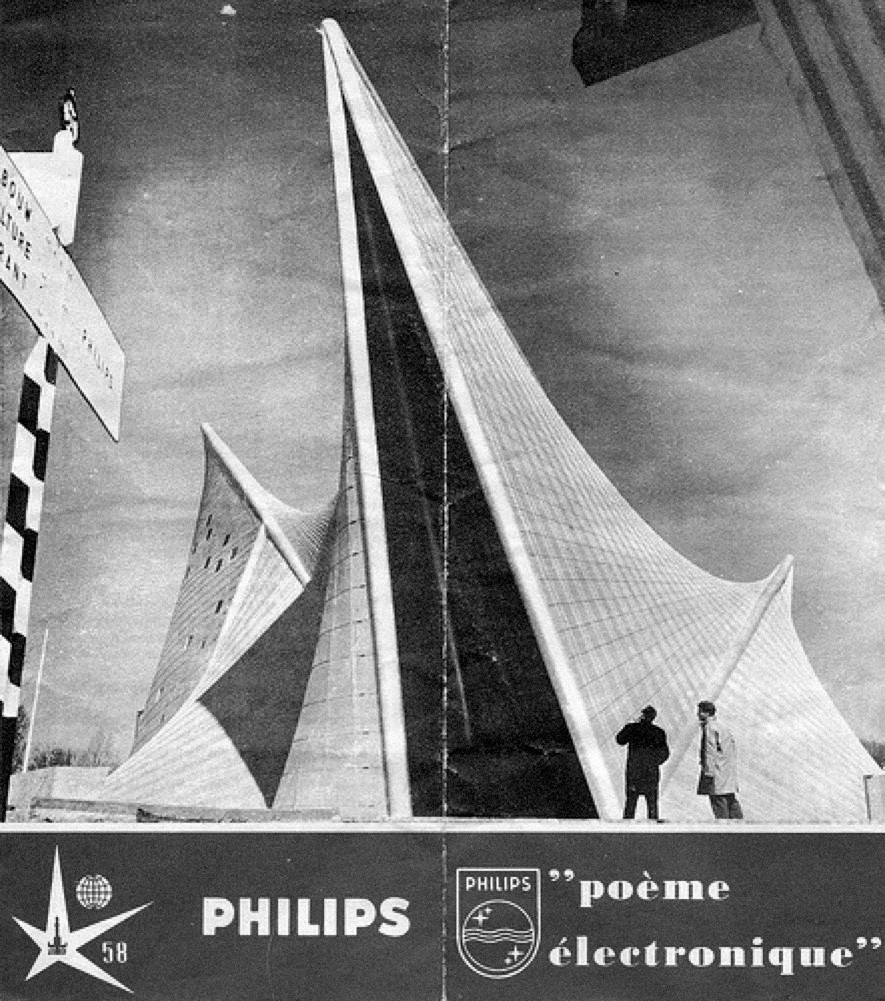
Figure 35. Publication cover for World’s Fair. Le Corbusier,
Iannis Xenakis, Edgard Varèse, «Poème électronique» Philips Pavilion, 1958
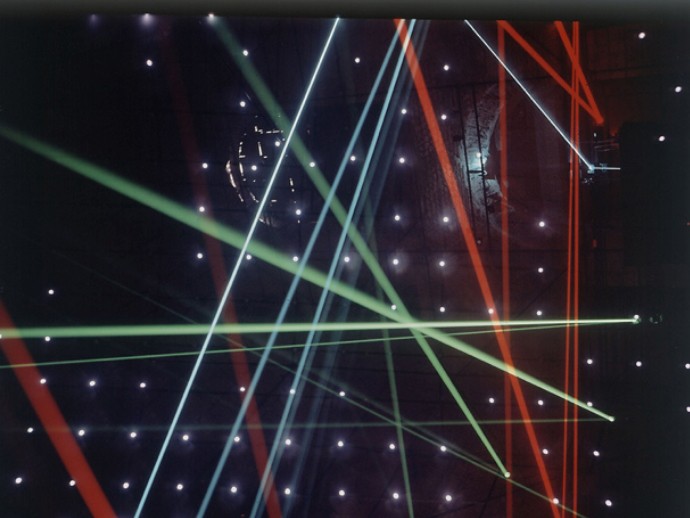
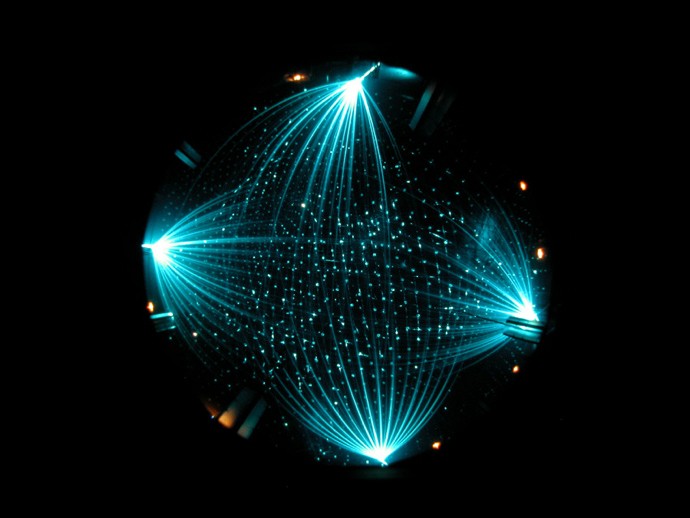
Figure 36. Light show in the Pavilion. Le Corbusier
Iannis Xenakis, Edgard Varèse, «Poème électronique» Philips Pavilion, 1958
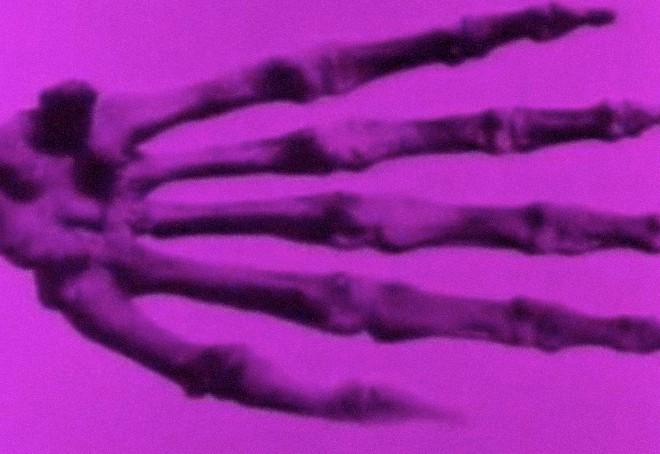
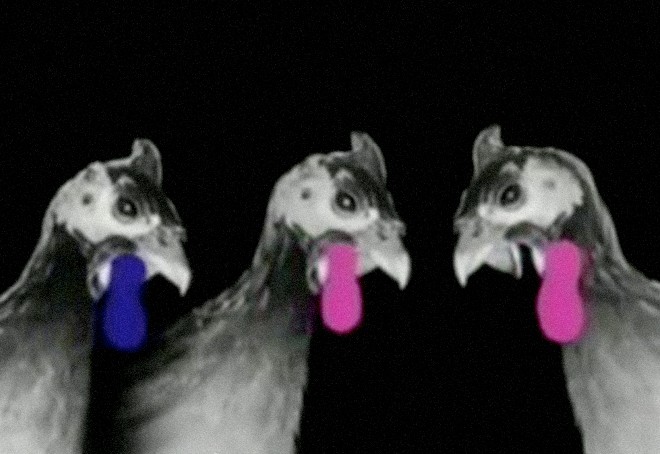
Figure 37. Still from the projections. Le Corbusier,
«Poème électronique» Philips Pavilion, 1958